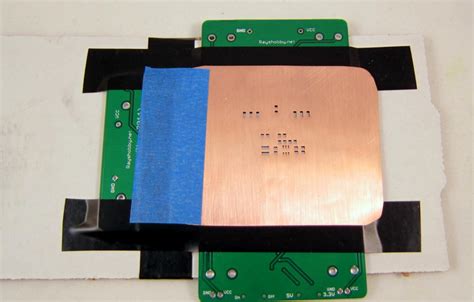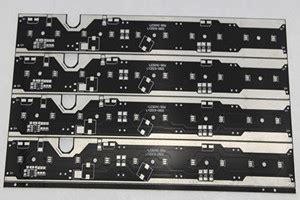RF & Microwave Blog
-
Read more: Printed Circuit Board (PCB) Introduction & PCB Types: A Comprehensive Guide
Introduction Printed Circuit Boards (PCBs) are the backbone of modern electronics. They provide the mechanical support and electrical connections necessary for electronic components to function together as a cohesive system. From simple consumer gadgets to complex industrial machinery, PCBs are integral to the design and functionality of virtually all electronic […]
-
Read more: General Knowledge of PCB OSP Surface Finish: A Comprehensive Guide
Introduction In the realm of printed circuit board (PCB) manufacturing, surface finishes play a pivotal role in ensuring the reliability, performance, and longevity of electronic devices. Among the various surface finishes available, Organic Solderability Preservative (OSP) has gained significant popularity due to its cost-effectiveness, environmental friendliness, and excellent solderability. This […]
-
Read more: Comparison Between ENIG and ENEPIG: A Comprehensive Analysis
Introduction In the world of printed circuit board (PCB) manufacturing, surface finishes play a crucial role in ensuring the reliability, performance, and longevity of electronic devices. Among the various surface finishes available, Electroless Nickel Immersion Gold (ENIG) and Electroless Nickel Electroless Palladium Immersion Gold (ENEPIG) are two of the most […]
-
Read more: Layer Stackup in PCB Design: A Comprehensive Guide
Printed Circuit Board (PCB) design is a complex and multifaceted process that requires careful consideration of various factors to ensure optimal performance, reliability, and manufacturability. One of the most critical aspects of PCB design is the layer stackup, which refers to the arrangement of copper and insulating layers that make […]
-
Read more: The Printed Circuit Board Assembly (PCBA) Process: A Comprehensive Guide
Printed Circuit Board Assembly (PCBA) is a critical process in the electronics manufacturing industry. It involves mounting and soldering electronic components onto a printed circuit board (PCB) to create a functional electronic device. From smartphones and laptops to medical devices and automotive systems, PCBA is the backbone of modern electronics. […]
-
Read more: Printed Circuit Board (PCB) Materials: A Comprehensive Guide
Printed Circuit Board (PCB) Materials: A Comprehensive Guide Printed Circuit Boards (PCBs) are the backbone of modern electronics, serving as the foundation for virtually every electronic device we use today. From smartphones and laptops to industrial machinery and medical equipment, PCBs enable the interconnection of electronic components, ensuring the seamless […]
-
Rogers TMM 6: A Comprehensive Review
Posted by
–
Read more: Rogers TMM 6: A Comprehensive ReviewRogers TMM 6 is a popular speaker system that has gained a reputation for its exceptional sound quality and durability. Designed to be used in a variety of settings, from home theaters to professional recording studios, the TMM 6 has become a go-to choice for audiophiles and music industry professionals […]
-
Rogers CLTE-AT: The Fastest Mobile Network
Posted by
–
Read more: Rogers CLTE-AT: The Fastest Mobile NetworkRogers CLTE-AT is a wireless network technology that provides high-speed internet connectivity to users. It stands for Continuous Long-Term Evolution – Advanced Technology, and it is an upgrade to the previous LTE technology. Rogers CLTE-AT offers faster download and upload speeds, lower latency, and improved network efficiency. Rogers Communications, a […]
-
What is PCB stencil?
Posted by
–
 Read more: What is PCB stencil?
Read more: What is PCB stencil?Overview of PCB Stencil A PCB (Printed Circuit Board) stencil is a thin sheet of material, typically stainless steel or polyester, that is used in the process of applying solder paste to a PCB during surface mount assembly. The stencil has openings or apertures that correspond to the pads on […]
-
An Introduction to Aluminum PCBs by RAYPCB
Posted by
–
 Read more: An Introduction to Aluminum PCBs by RAYPCB
Read more: An Introduction to Aluminum PCBs by RAYPCBWhat are Aluminum PCBs? Aluminum PCBs are printed circuit boards that use aluminum as the base material instead of the traditional FR-4 or other materials. The aluminum substrate provides excellent thermal conductivity, which makes these PCBs ideal for applications that require efficient heat dissipation. Aluminum PCBs are widely used in […]
Recent Posts
- How to Select Material for Your PCBs from Cost and Reliability Considerations
- Problems of EMC Technology Application in PCB Design of Electronic Devices and the Strategies
- Fabrication Technology on Flex-Rigid PCB Window
- Problems of High-Frequency and High-Speed Multilayer PCB Fabrication and Their Solutions
- Key Difficulties and Tips for Backplane PCB Fabrication